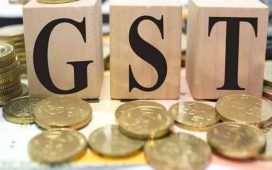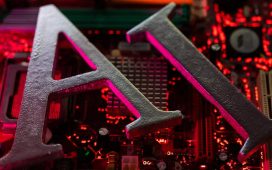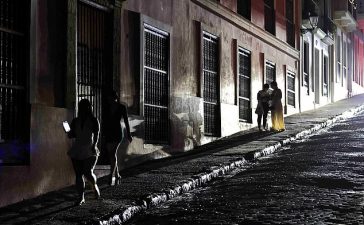
With the assassination of Dara Shukoh, Aurangzeb took over the throne of Delhi and the Mughal empire. Aurangzeb’s salafi world view destroyed any hope of the confluence of two seas and changed India’s destiny. It plunged the Indian subcontinent into wars of annexation which brought the Mughal empire to its zenith. India became the most important islamic political power of its time, contributing 25% of the world’s GDP but this prosperity did not make up for the suffering of its Hindu majority.
Hundreds of years later in 2007, The Confluence of the Two Seas was the title of a speech by Shinzo Abe, the Prime Minister of Japan, which was his appeal to the parliament of India to work together to counter China in the south China seas. That speech in 2007 inspired the concept of two seas and four powers, brought together the United States, India, Japan and Australia to form the Quad, to guarantee a free and open Indo-Pacific. This very speech of Shinzo Abe, propelled India eventually into the political center of Asia Pacific, changing India’s destiny once more giving rise to the Indo-Pacific, with India at its political center where it finds itself today. India is waking up to being a maritime power which straddles two confluences of seas and puts itself at the center of the Europe, Middle East, India, Asia trade. Civilizationally it finds itself as the confluence of several seas, but mainly Sanatana Dharma(Hinduism) and Islam which propel its importance as a cultural and spiritual power.
In 2023 at the G20 in New Delhi, India launched the India-Middle East-Europe Economic corridor(IMEC). While IMEC is supposed to be a trade corridor much like the international north South Trade Corridor(INTSC), it is much more. The IMEC has also the potential to bring together India’s ancient trade routes to Europe, through the Middle East.
Since Roman times, there has been a dream of connecting the Mediterranean Sea and the Indian Ocean. Indian pepper (both longum and nigrium), increased in popularity in Rome around 30 BC, and eventually over 70 per cent of Roman recipes required the use of Indian pepper. Over 670 years of Roman trade with south India was interrupted by the capture of Alexandria and Egypt from Rome by the Rashidun Caliphate.
A second blow to the Indo-Mediterranean connectivity was the fall of Constantinople to the Ottomans in 1452 which destroyed Venice and Genova’s trade monopoly with India and the orient. The confluence of the Indian Ocean and the Mediterranean Sea, the Indo-Mediterranean, has been essential for the prosperity of both Italy and India. The region has always been of great political importance, and especially now when the Bab al Mandab, the strait of Hormuz, the Mediterranean basin and the Indian Ocean region (IOR) are essential for the transit of energy and goods between Europe, West Asia, India and the far east.The importance of IMEC therefore is essential for the two pillars of the Indo-Mediterranean, India and Italy. However, whether the architects of IMEC planned for it or otherwise, it is much beyond just a trade route.The Indo-Mediterranean is the cradle of all modern religions which are known to man. Among the key IMEC countries, four are the flag bearers of the most important religions today. Italy, a catholic majority country, hosts the Holy See and the Pope in the Vatican, supreme pontiff of the world’s catholics. Saudi Arabia is the custodian of the Two Holy Mosques of Islam,where Islam was founded. Israel is the only jewish state in the world. India is home to most religions, but also the largest Hindu state globally. IMEC passes through Jordan and Israel who together share the spiritual future of the most important multifaith city in the world, Jerusalem, the cradle of the three abrahamic religions.
IMEC goes beyond just a trade route and connectivity, its ambitions connect people, history and create alliances that are beyond trade. As Ameya Prabhu, President of the Indian Chamber of Commerce, said at the launch of the Indo-Mediterranean Initiative, “trade can happen only when there is trust.” Trust is built between people over a period of time, on common values and common language.
IMEC’s ambitions and its history explain a violent reaction from islamic extremism, with the Hamas attack on Israel. Time and again, in almost cyclic precision, the confluence of the two seas has found opposition in extremist Islamic movements or rulers, be it Aurangzeb then or Hamas today. IMEC future proofs the India-Italy(Europe) relationship, India-Middle East-Europe trade and trade routes. If IMEC countries choose Italian ports like Trieste as their European terminal, transport between Europe’s industrial heartland (Germany, Austria, Hungary, Czech Republic, Slovenia and the Italian industrial regions of Veneto and Lombardy) and India will benefit tremendously.
IMEC’s anniversary is around the same time as the anniversary of 9/11, which originally started the clash of civilizations between Islamic extremism and the rest of the world. Apart from China, state and non-state actors such as Pakistan, Hamas, Houthis and others oppose the consolidation of the Indo-Mediterranean as well as India’s growth and prosperity. The steadily growing Russia-China bonhomie, also questions Russia’s sincerity about its India friendship. Not only do India and Europe have to worry about Chinese influence in Maldives and Seychelles, its ports in Gwadar and Djibouti and its links to anti-India governments in Myanmar and Bangladesh, they should also worry about the proposed Russian Naval base in Sudan and Turkish presence in the Gulf of Aden patrolling the seas off Somalia. Other reasons why IMEC is essential.
In an era where US leadership is distracted by the Presidential elections it is up to India and Italy to pick up the leadership to protect the Indo-Mediterranean. Be it Somalia or Yemen, Syria or Iran both India and Italy have the credibility to act as peacemakers working together to stall humanitarian disasters and protect the vulnerable. Where Italy’s enlarged Mediterranean and Mattei plan ends, India’s Sagar (Security and growth for all in the region) begins. IMEC is the future of the Indo-Mediterranean. Only the confluence of two seas will protect humanity from aggressions and wars. Both Dara Shukoh and Shinzo Abe had the same vision which IMEC has now tried to implement. Its success, both on the spiritual, philosophical and the political dimension depends on the “Melodi” partnership.
The author is an Indo-Italian entrepreneur and has over 25 years of leadership and entrepreneurial experience across a wide range of disciplines including pharmaceuticals, technology, renewable energy, strategic consulting, not-for-profit and development in over 30 countries. He is also the founder of the The Indo-Mediterranean Initiative (CNKY.in)










